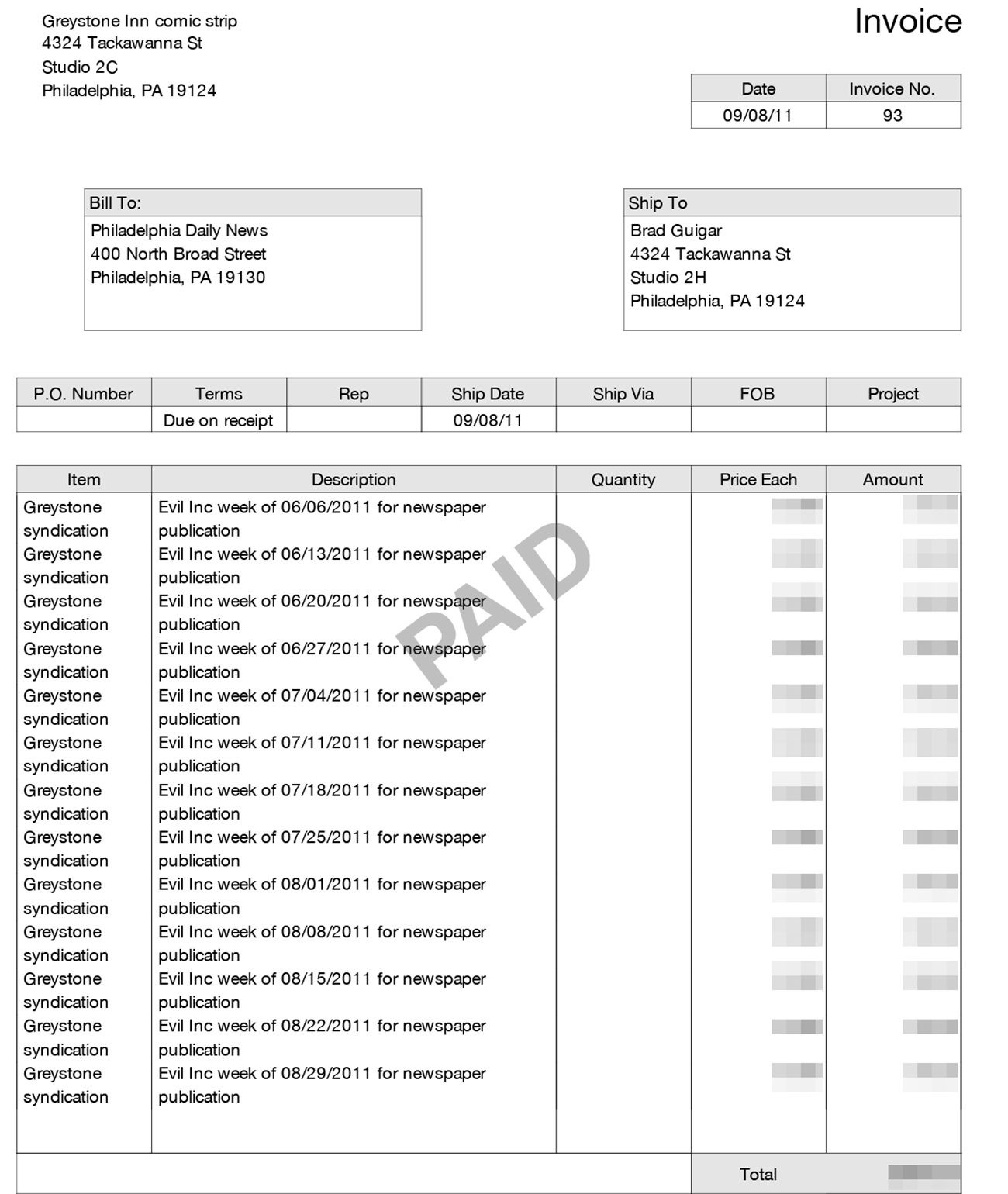How to create an invoice
FREE FRIDAY! Read this post without a subscription! Getting paid for a project is always great — except for the first time you get asked to submit an invoice. If you’ve ever been embarrassed to admit that you didn’t know how to do this routine business task, here’s a quick primer
Why an invoice?
An invoice, simply put, is a bill. You are stating that you did certain work for the client, and you’re indicating the price that the client should pay for this work. The client will then file your invoice and use it to prove their own business deductions at tax time. They will also forward a copy of the invoice to whatever organizational mechanism the business uses to pay its bills.
Therefore, your invoice needs to serve two puposes:
- Provide a detailed accounting of how much money was paid, and for what purpose(s).
- Enable a check to be prepared and delivered to you.
Anatomy of an invoice
Here’s a sample invoice. It was generated by QuickBooks, but you could easily build a replica yourself.

From top to bottom, we have a few necessary elements:
- Letterhead: Provide the identifying information for your business. Include your mailing address. If you’d like, you can also provide contact information, such as your phone number and e-mail address.
- “Invoice” — at the upper right-hand corner, identify this paperwork so it can be properly handled by the client’s internal bureaucracy.
- Date: This is the date you’re creating your invoice.
- Invoice number: This makes it easier in case you and the client need to discuss the invoice. In an instance of multiple jobs, you can be sure you’re talking about the same one.
- Bill to: This is who you are sending the bill to
- Ship to: This is where you’d like the check to be mailed to. If you’re accepting an electronic payment — such as Paypal — indicate the proper identification here.
- P.O. Number: Provide a space for the business to enter its own PO number (which may be needed for their bookkeeping)
- Terms: When is the bill due? It may be due upon reciept — or you may have agreed to a net-30, net-45 or net-60 payment arrangement. That means that the bill will not be due until 30, 45 or 60 days after the client received the invoice.
- Ship Date: This is when you delivered the final product
- Ship via: Method of delivery
- FOB: Stands for “Freight On Board” this is any delivery costs.
- Project: This area is for any identifying information that links this job to a larger project.
The heart of the invoice is a itemized listing of what services you provided, and how much those services cost.
- Item: Describe what you did in general
- Description: Describe what you did in detail
- Quantity: How many of these items did you provide?
- Price each: How much does one of these items cost?
- Amount: Multiply Quantity by Price each to arrive at the total cost for this Item.
- Total: Add up the Amounts of all of the Items.
It’s as simple as that. You now have a record of what you did, and how much money should be paid as a result. The two parties are identified, and all of the details are provided. You have a copy to use to prove income (if needed) during tax time, and your client can accurately deduct a business expense. If there are any discrepancies, both you and the client have a shared documentation to refer to as you work through a resolution.
Send an invoice through Square.com
If you do conventions, it’s likely that you have an account with Square.com. That’s the company that enables you to process credit-card transactions at conventions using a smartphone dongle. You can also use Square.com to send invoices.
- Navigate to Invoices in your online Square Dashboard > click Create Invoice.
- Select a customer from your Customer Directory, or enter a new name and email address. You can enter up to 9 recipients.
- Add the invoice details. Select items and apply modifiers by clicking Customize. …
- Click Send.
Send an invoice through Paypal
Even if you don’t have a Square account, it’s very likely you have Paypal account. You can also use Paypal to deliver an invoice.
- Log in to your PayPal account.
- Go to the Request Money tab.
- Click on the Create an Invoice subtab.
- Select an invoice template or blank template.
- Fill out the invoice.
- Review it.
- Click Send Invoice.
- If you prefer, save your invoice as a template for future use.





Recent comments